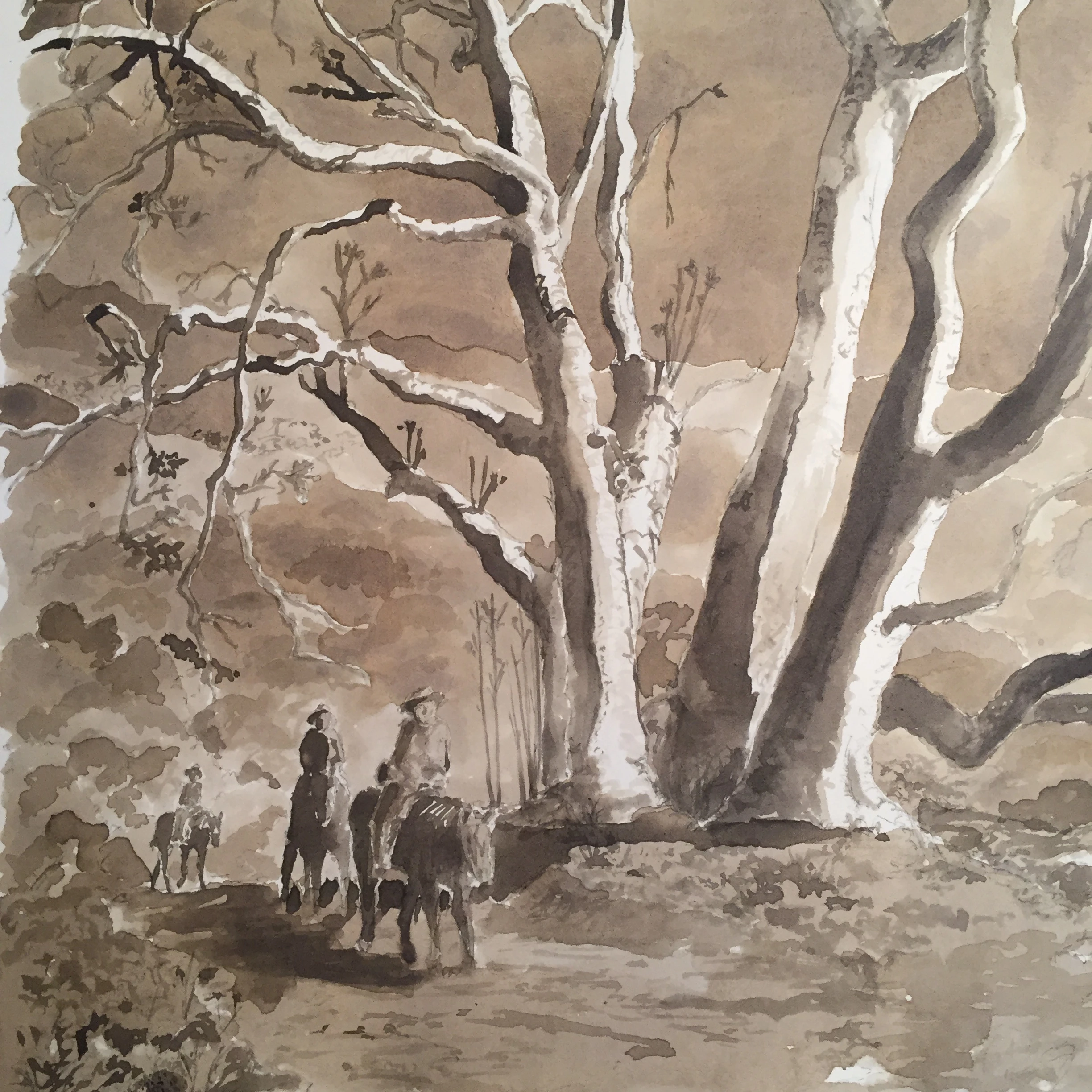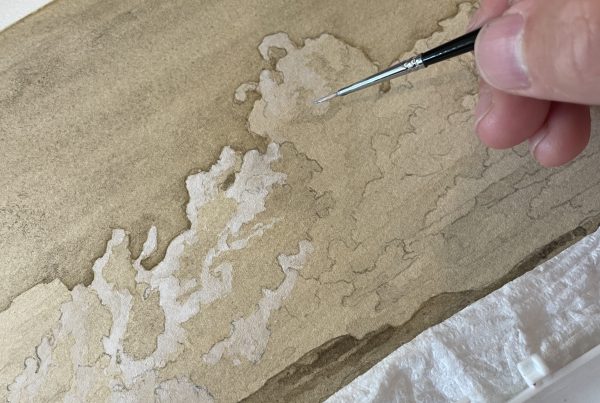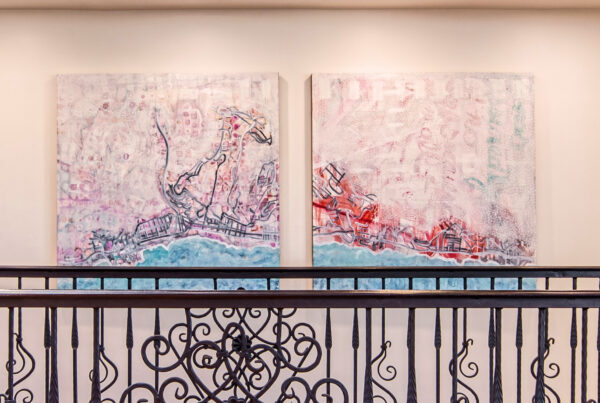“Oak gall ink? What’s that doing here?”
Heya! I know – you’re probably thinking – “Why is there an oak gall ink recipe on Jesse’s real estate website? Isn’t this a place to talk about interest rates and rental returns and stuff like that?”
Sure it is, but, you know – I do other stuff, too, and I can’t think of a better place than right here to tell you about something I love doing – steeping myself in a medieval art process and making it my own… what is that process, you say? Why, oak gall ink making & oak gall ink drawing, of course.
Oak gall ink runs the gamut from a brownish-purple-black to walnut tones to warm caramel in color and I love the way it reveals itself over time (the colors can darken or shift hues over days and even years). 17th C. painter & draughtsman, Claude Lorrain, is one of my favorite artists; his brushy, seemingly effortless preparatory ink drawings for his landscape paintings speak more to me than the final oil paintings do…
So – let’s start with the recipe for the ink and then I’ll show ya what you can do with it. Shall we?
Oak Gall Ink Recipe (aka Iron Gall Ink)
Oak gall ink contains four ingredients: oak galls, ferrous sulphate, gum Arabic and water.
Things you’ll need to make about 10 ounces of ink:
– 3-4 ounces of oak galls
– Ferrous sulphate
– Gum Arabic
– Water
– Scale (for measuring)
– Hammer (for crushing)
– Ziploc bag (for holding crushed galls)
– Glass jars (for steeping & storing ink)
– Paper coffee filter
– Plastic funnel
– Paper plate(s)
In brief, I use 3-4 ounces of crushed oak galls soaked overnight in enough water to cover them (about a pint), then I strain the mix, stir in one ounce of ferrous sulphate and then one-half ounce of gum arabic is added, stirring until it is dissolved. Et voilà – oak gall ink!
Here are the steps, broken down:
Step 1: Gather Oak Galls
To make oak gall ink, the first step is to find some oak galls. Oak galls are small, round growths that form on oak trees as a result of oak gall wasp activity. The galls range in size from a small walnut to as large as a tennis ball. Look for oak trees in your area and search for fallen oak galls on the ground beneath them – or – look for them still attached to low-hanging branches where you can pick them by hand. The best time to collect them is in late summer or early autumn when the galls are mature.
I spied this big black oak (Quercus kelloggii) in Northern California some years ago and it was just bursting with oak galls… I live in Orange County, so my native oak is the Coast Live Oak (Quercus agrifolia), which I where I usually gather them, but I had my camera with me when we saw that big black, so snapped some photos of it so you can see what the galls look like in situ.

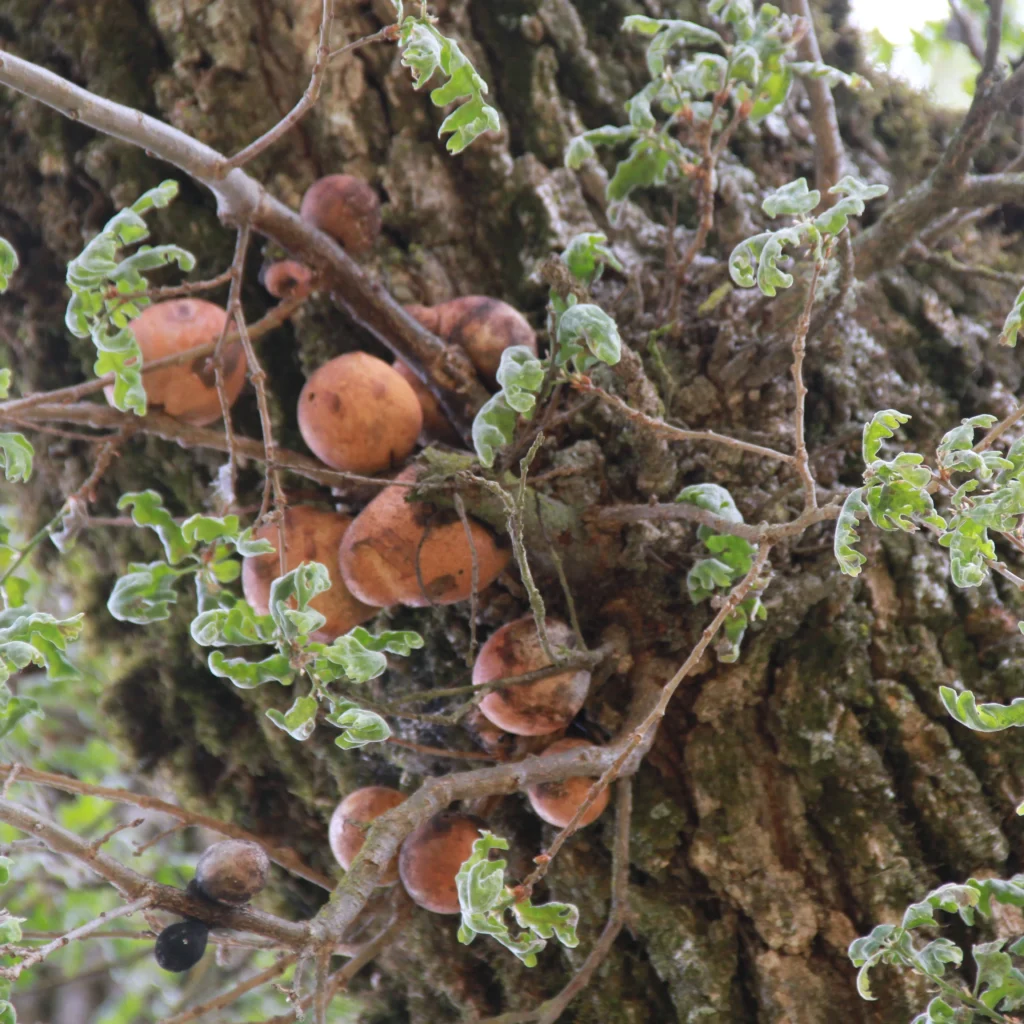
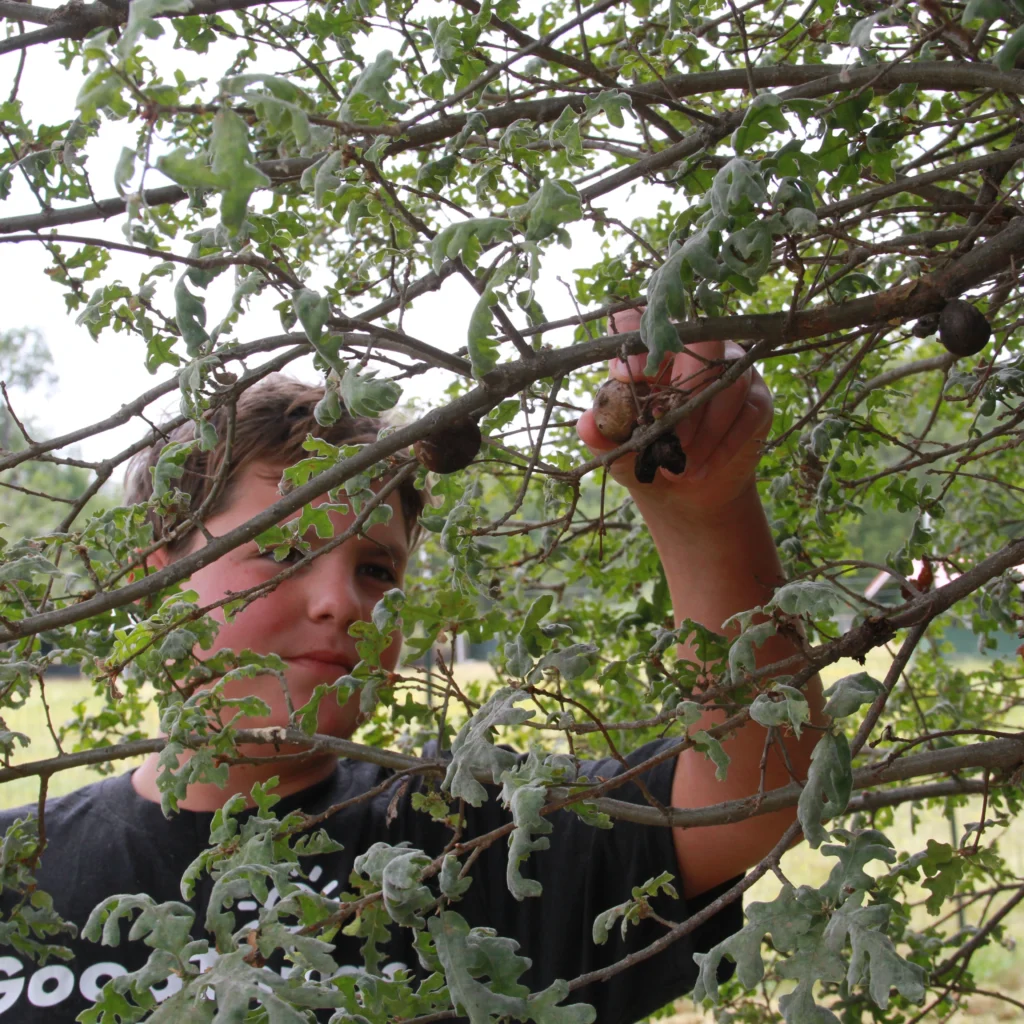
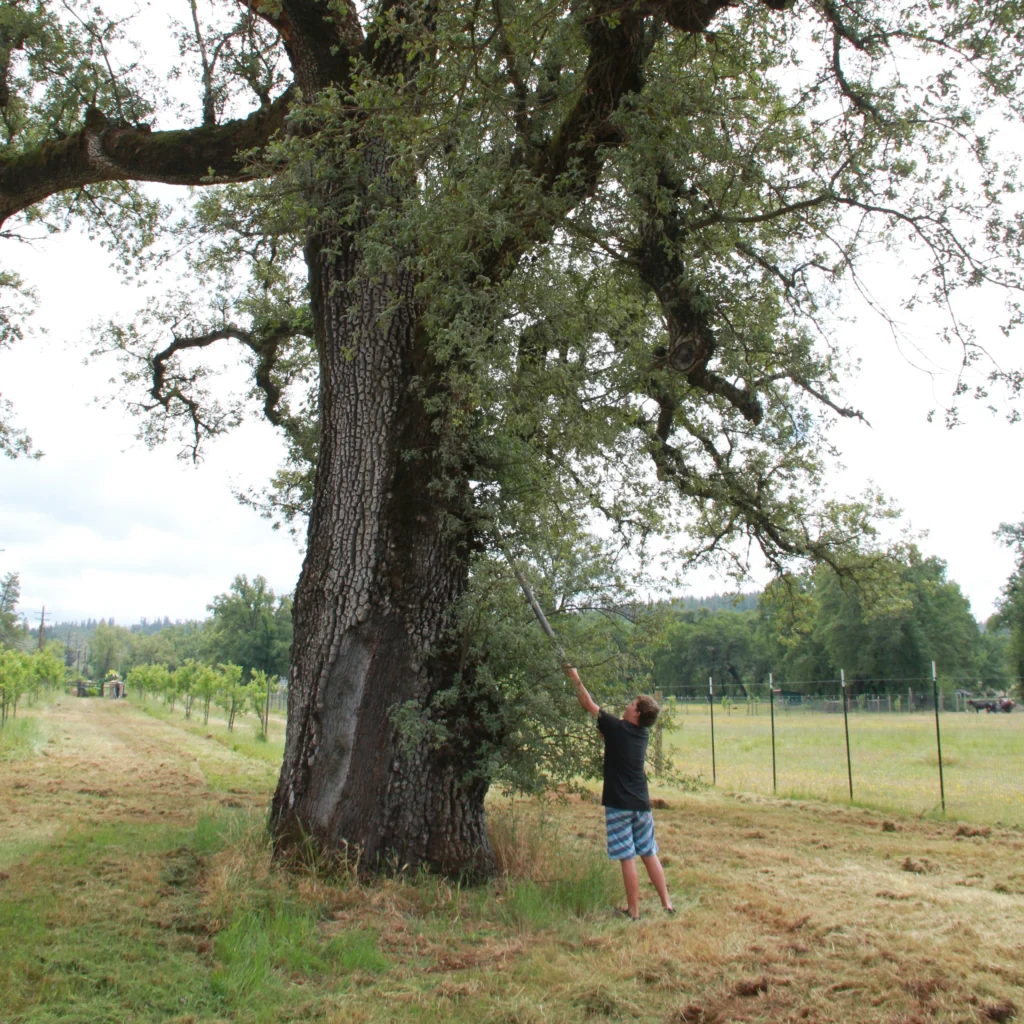

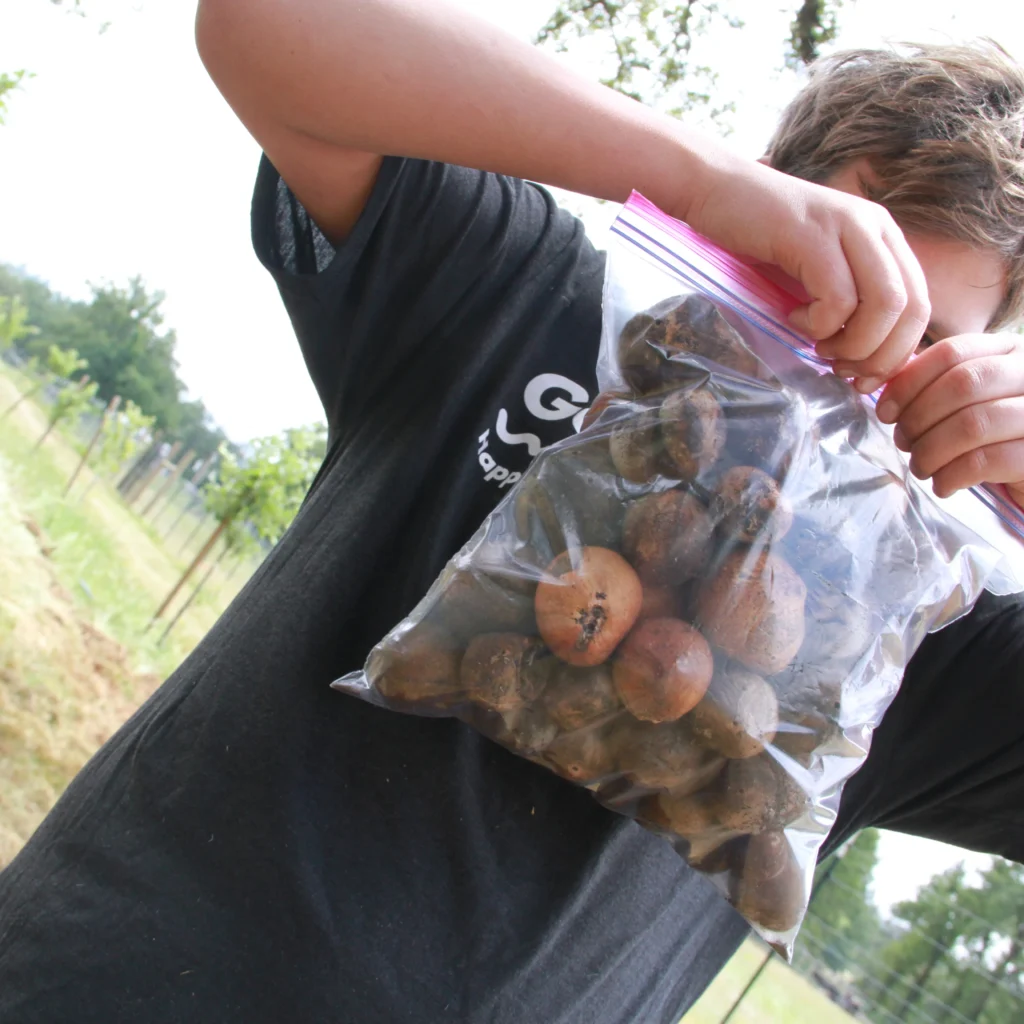
Sidebar – maybe not surprisingly, but the Black Oak produces that “brownish-purple-black” ink I mentioned above whereas the Coast Live Oak produces a lovely caramel brown ink.
Step 2: Source your Ferrous Sulphate + Gum Arabic
I use a ferrous sulphate heptahydrate produced by Alpha Chemicals.
“Ferrous sulphate?” “Alpha Chemicals?!” “I knew this medieval recipe was a scam.”
I know, I know – you thought this was a medieval recipe. Monks didn’t have stuff like this, right? Well, yeah, you could do what they did and source a rusty iron pot and steep your brew in that, then scrape and strain and hope the amounts were adequate, or you can jump that queue and get the factory good stuff, like I did. 😉
Here’s the brand I use:
https://www.amazon.com/Ferrous-Sulfate-Heptahydrate-FeSO47H2O-Soluble/dp/B007ODUI76/
If you’re freaked out by that seemingly exotic (and maybe toxic) ingredient, the NIH has a compound summary here on it https://pubchem.ncbi.nlm.nih.gov/compound/Ferrous-sulfate-heptahydrate and it appears it is has some nutraceutical uses, but do be careful handling it. Their safety protocols are here. https://pubchem.ncbi.nlm.nih.gov/compound/Ferrous-sulfate-heptahydrate#section=Safety-and-Hazards
Now for the powdered gum Arabic.
Buy some somewhere.
Art stores sell it, Amazon sells it and I think specialty food stores sell it, but I don’t know why… This stuff looks good:
https://www.dickblick.com/products/jacquard-gum-arabic/
Step 3: Prepare the Galls
Once you have gathered enough oak galls, it’s time to prepare them for ink-making.
Weigh out 3-4 ounces of the galls.
Once you’ve got them weighed out, pop them into a Ziploc bag (keeps things clean) and start giving them the old whackola-smackola with your hammer. You want to break them up into the smallest pieces you can (but don’t sweat it – a good general crush will do).
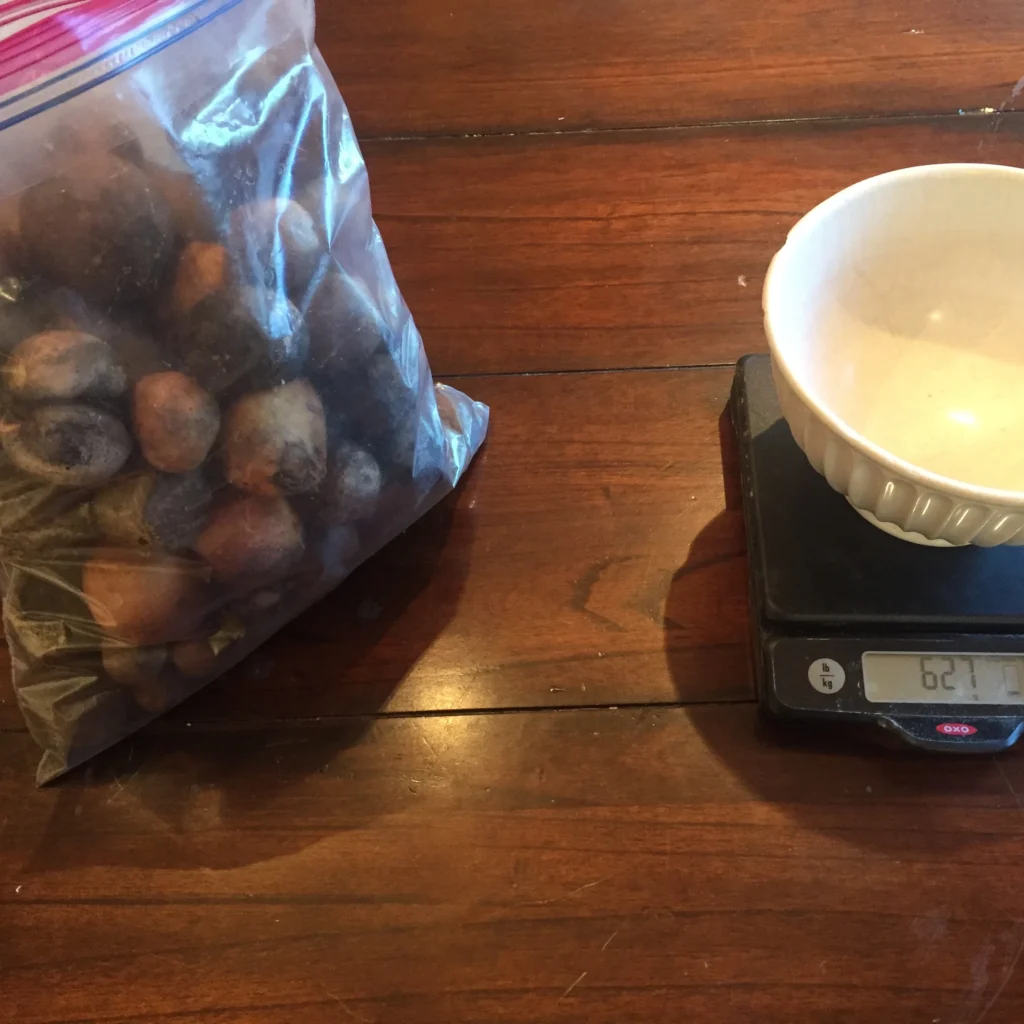


Step 4: Create the Ink Solution
After crushing the oak galls, place the crushed pieces into your glass jar. Next, add hot water to the container, covering the crushed galls completely. The hot water will help extract the tannic acid more effectively. I think that jar held about a pint of water.
Allow the mixture to sit for at least 24 hours, or even up to a week, to allow the tannic acid to dissolve into the water. I only let mine steep overnight… I’m just not that patient and it’s worked out nicely for me, so… play it how you want.
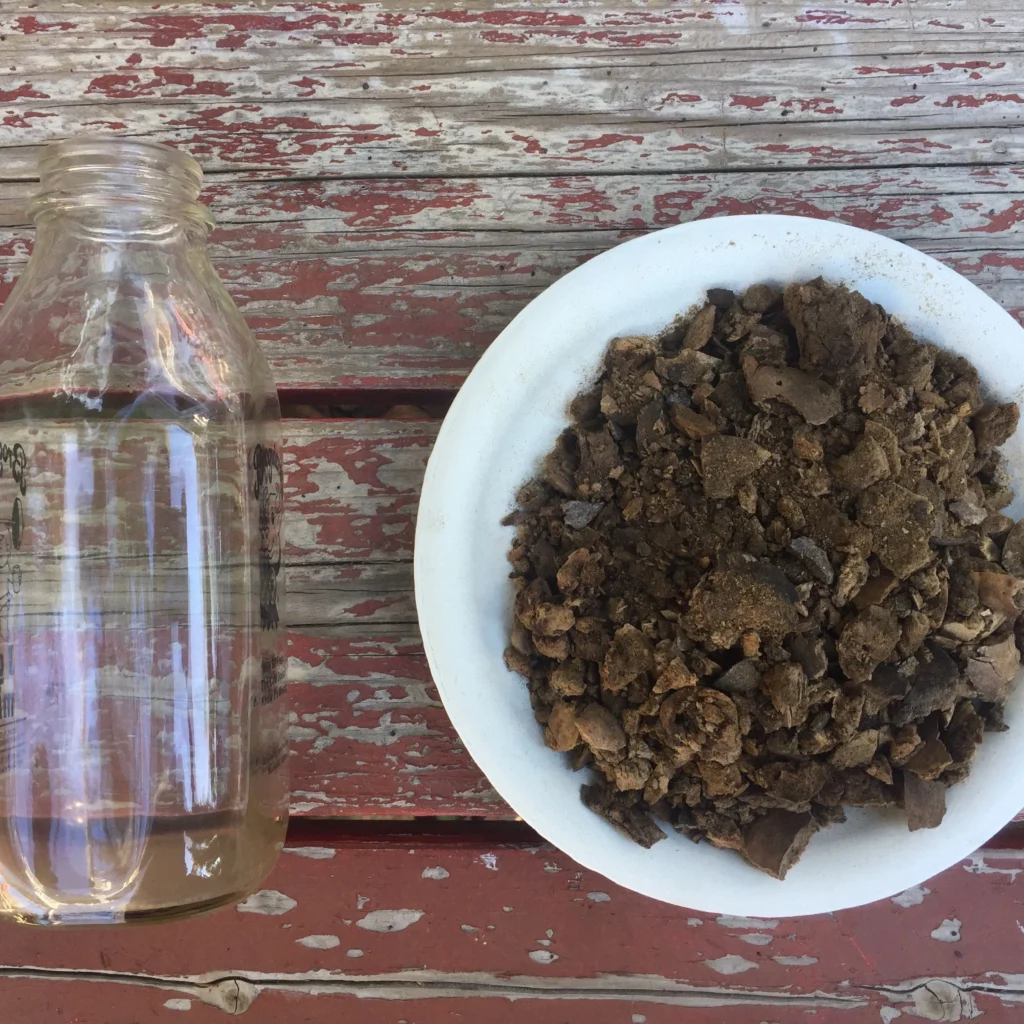


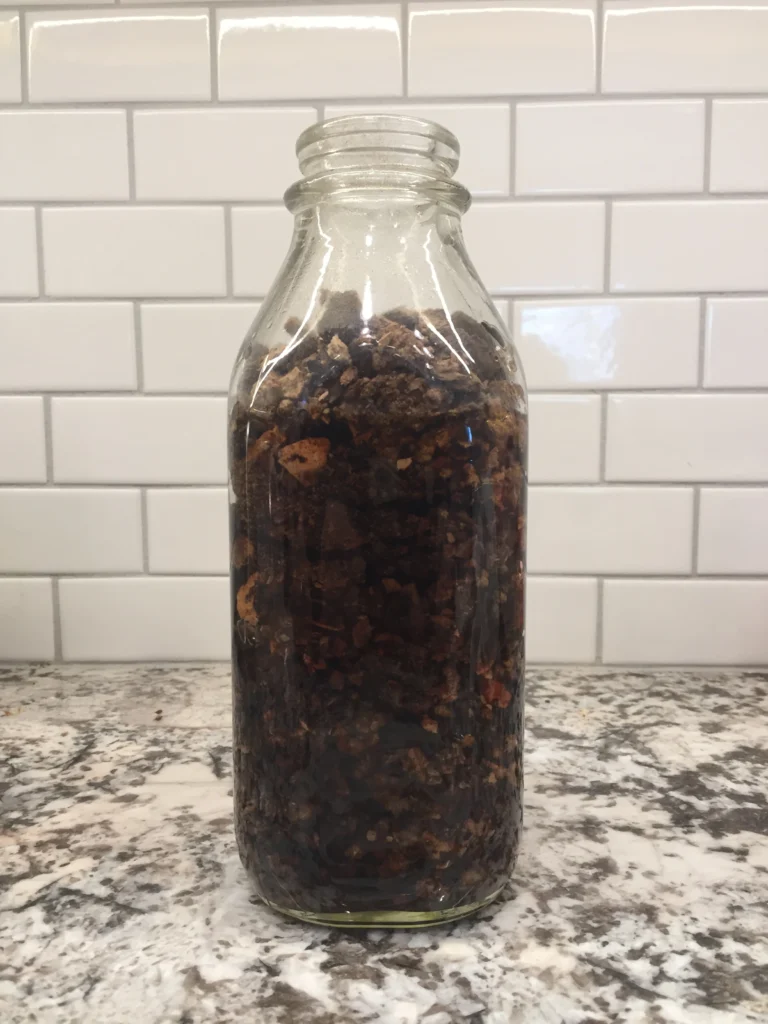

Step 5: Strain the Solution
Once the mixture has steeped for the desired amount of time, strain it to remove the solid particles. You can use a fine mesh strainer, cheesecloth, or even a coffee filter to achieve this.
I used a fine strainer to catch the big pieces and then, immediately below that, a paper coffee filter in a plastic funnel. You can do this any number of ways, of course, but you get the idea – strain the steeped liquid into a clean glass container, ensuring that no solid particles remain in the ink solution.
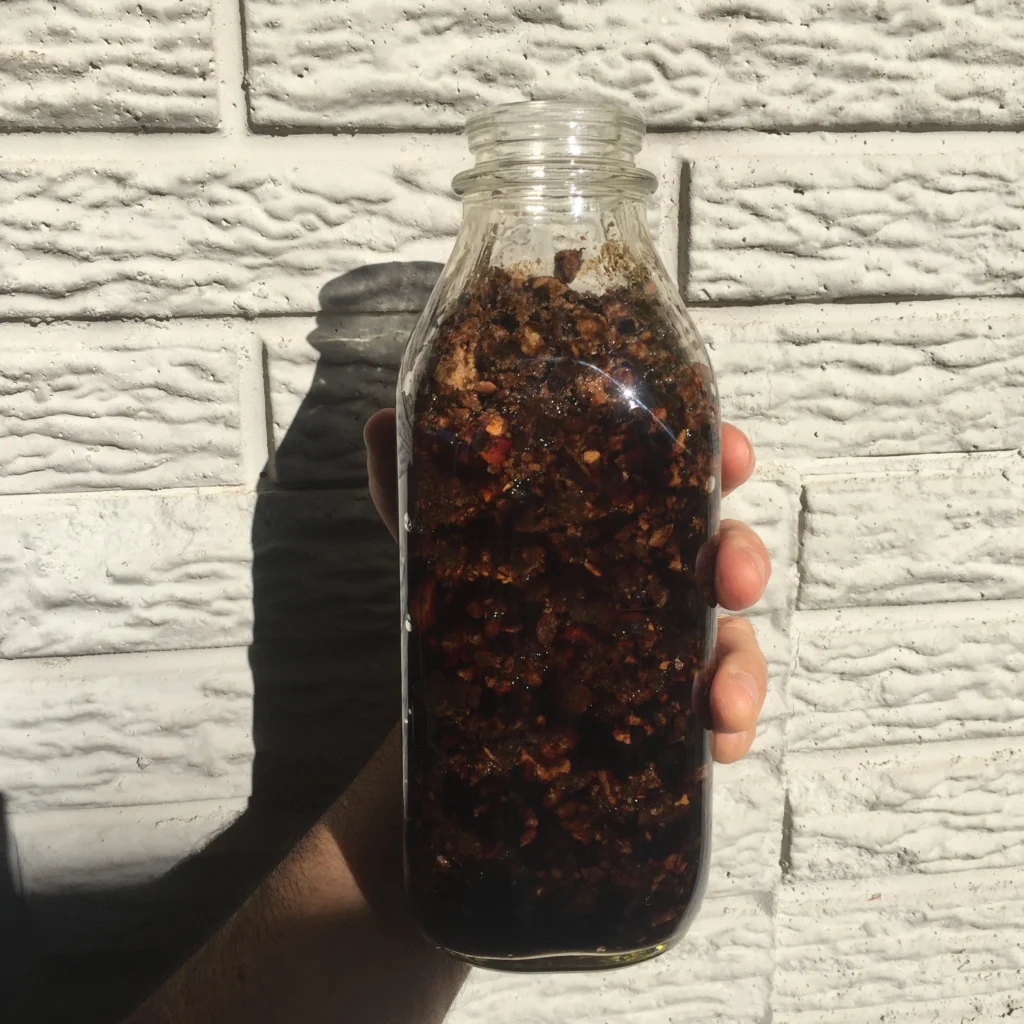

Step 6: Mix in the ferrous sulphate and gum arabic
Obligatory (and meaningful) disclaimer – remember to exercise caution when handling materials, especially if you have any allergies or sensitivities.
Measure out one ounce of ferrous sulphate onto a piece of paper. Set aside.
Measure out one half ounce of gum Arabic onto a piece of paper. Set aside.
You’re going to add in your ferrous sulphate into your strained mix now. This is easy breezy. Ready?
Add it in to your strained brew and give it a good stir. That’s it.
At this point, the dark brown oak gall ink should turn jet black, and technically, is ready for use. But – we’re going to add the gum Arabic to give it some gloss and “body”, but not just yet.
Mixing in the gum Arabic takes an extra step because you don’t want to just add it directly into the ink – it will ball up and be very difficult to mix into the solution (trust me on this).
In a small plastic bowl, add a bit of water (~2 Tbs or so) and then slowly stir in the gum Arabic using a fork. Stir and mash the slurry until there are no lumps left. Once you’re happy with the wet gum Arabic consistency, you can stir it into the ink now (thoroughly).


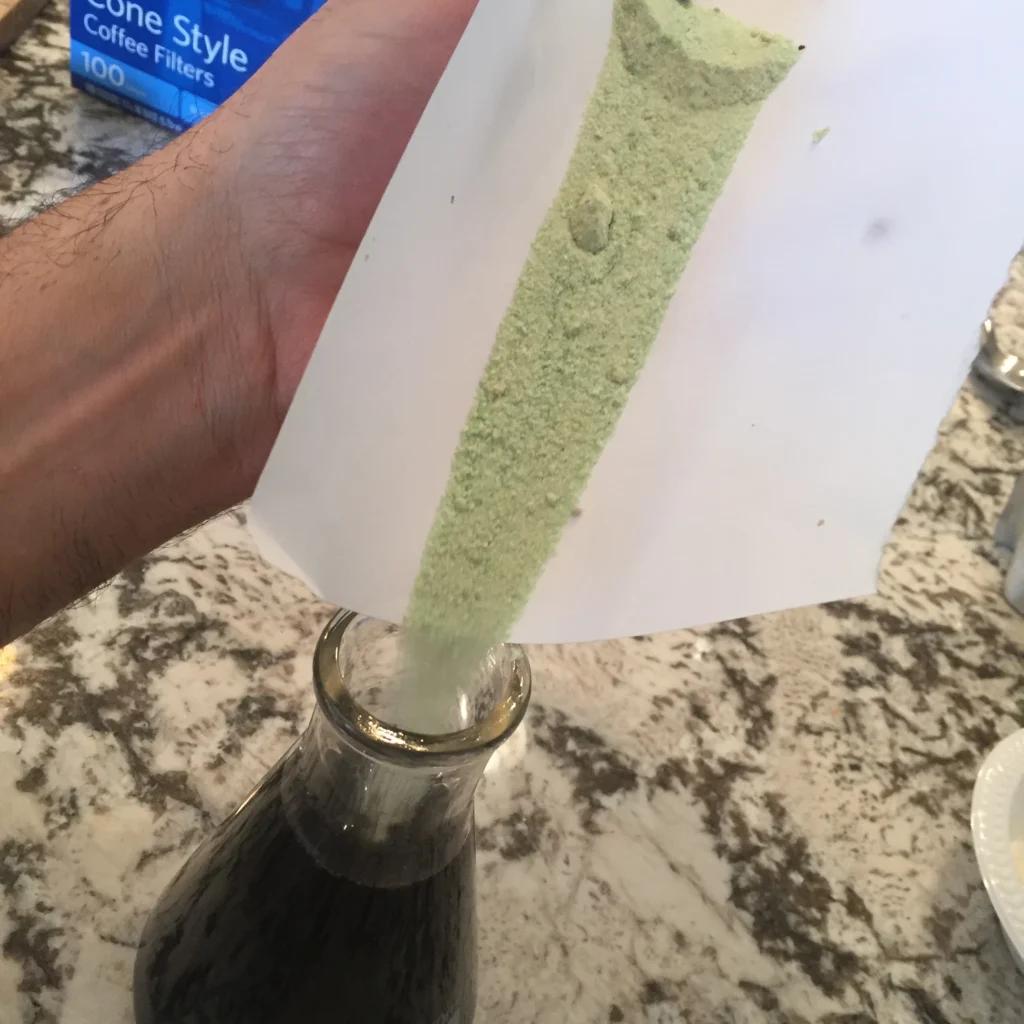
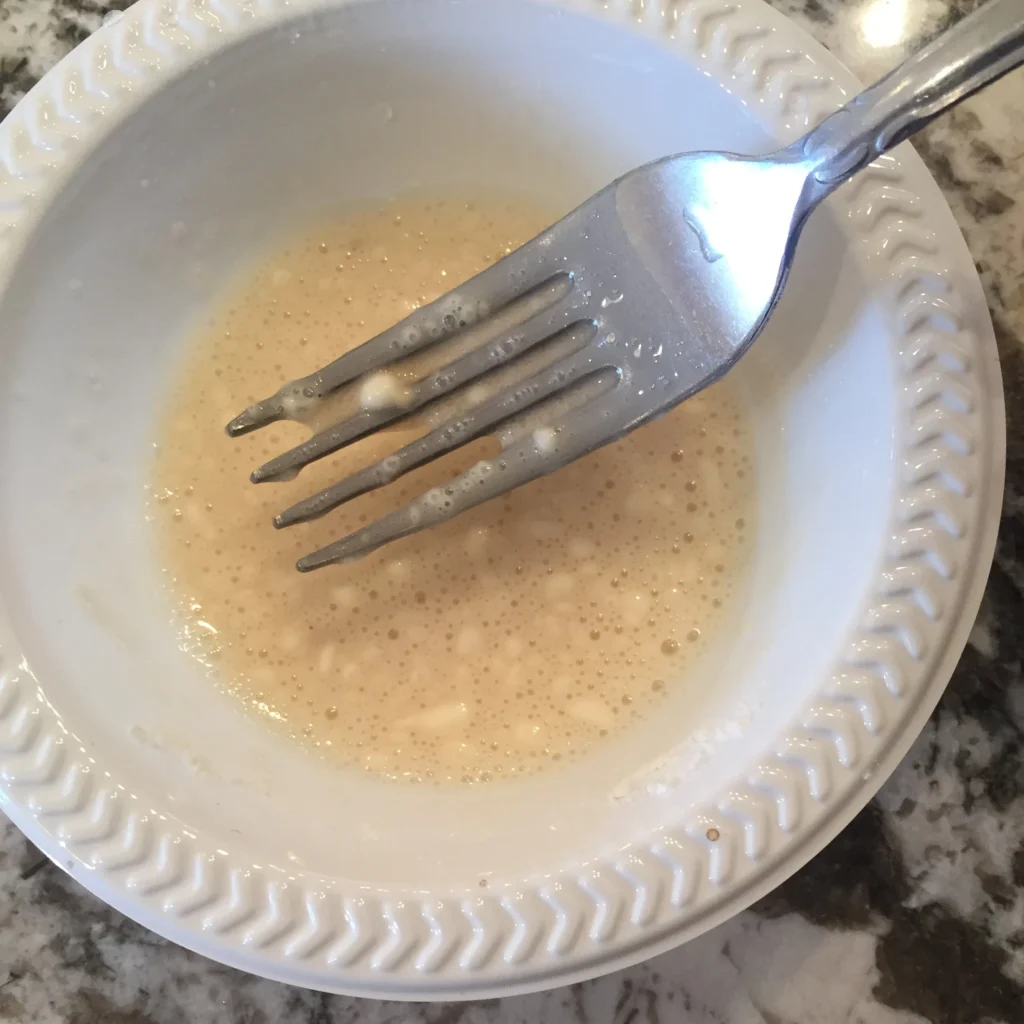
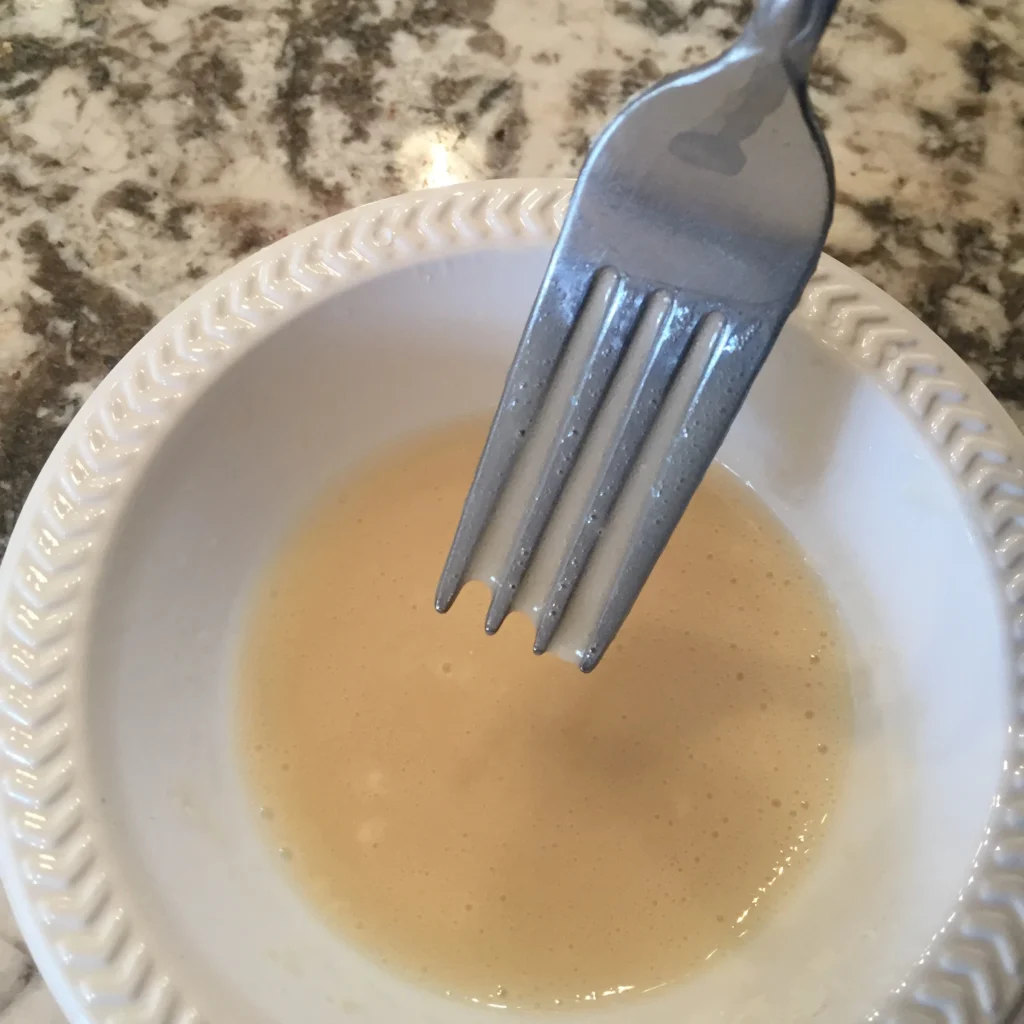
Step 7: Store and Make Art!
This is the perfect time to trot out all your cool jelly jars and chichi glass yogurt containers you’ve been squirrelling away in that cabinet and put them to work in the most noblest service – the Service of Art. (is that a club yet? We should start it together!)
Transfer the oak gall ink into your sealable containers, and for extra credit, make a cool label with the date of creation, the type of oaks you gathered your galls from, and your own oak gall brand name – “Jesse’s Northern Cali Purple Midnight Oak Gall Ink” or something like that.
Store your new ink in a cool, dark place to preserve its quality. Oak gall ink has a long shelf life if stored properly. I have a few jars that are 5+ years old that still produce beautiful ink… Over time, the ink may darken and shift hues slightly, so be open to the possibility that it won’t be exactly what it was the last time you used it.
To use the ink, dip a pen or brush into the inkwell and start writing or drawing. Watercolor paper is best.

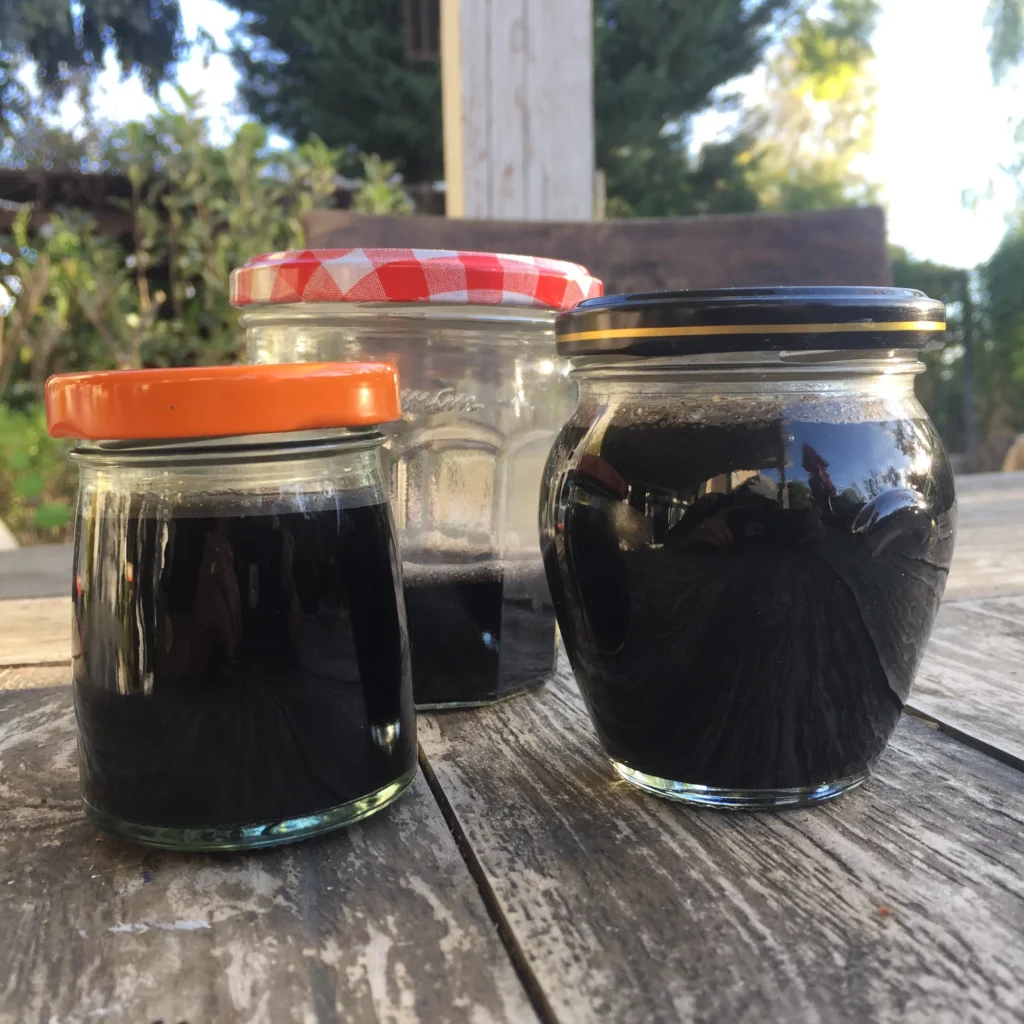


Here’s an ink drawing I did awhile back on a big sheet of Arches watercolor paper… Really hope you enjoyed the tutorial!
– Jesse
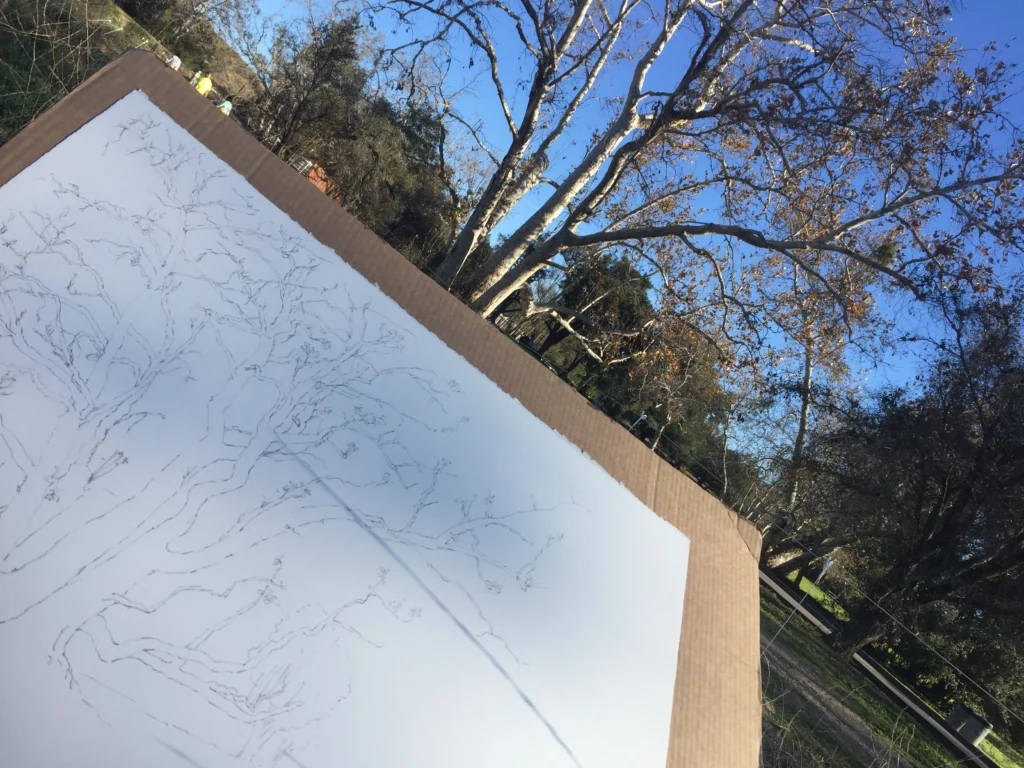
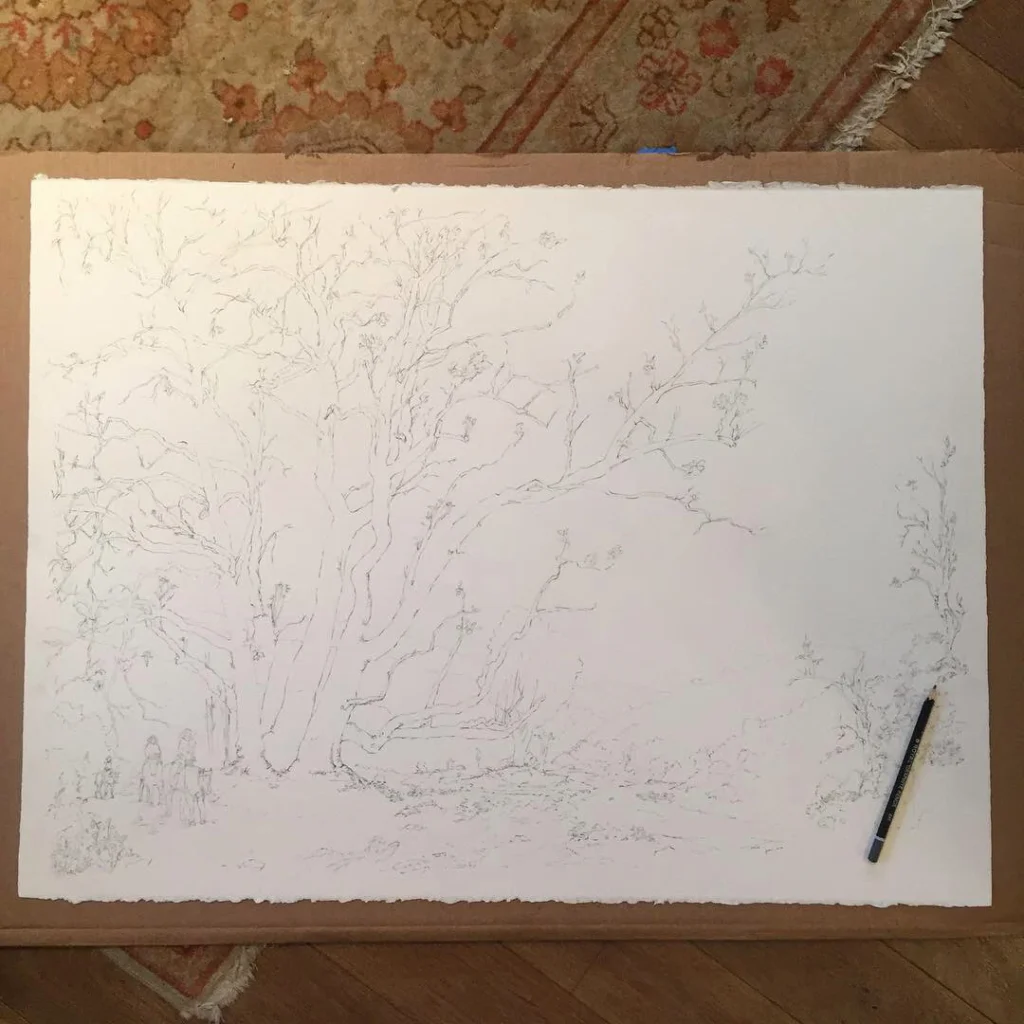
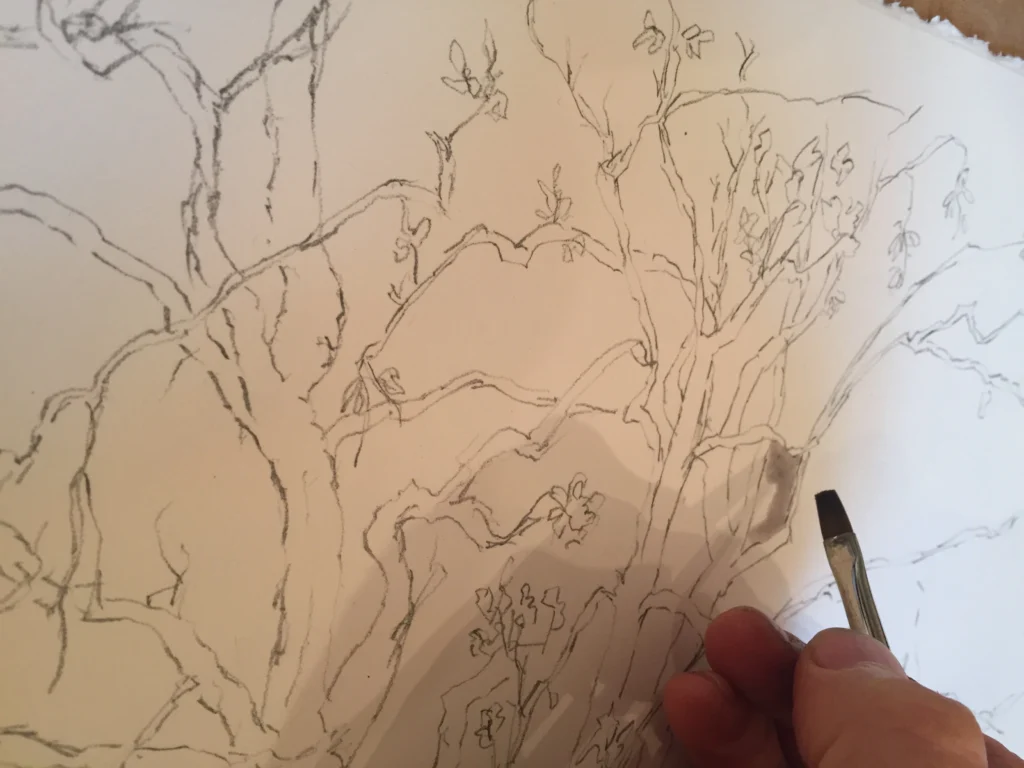
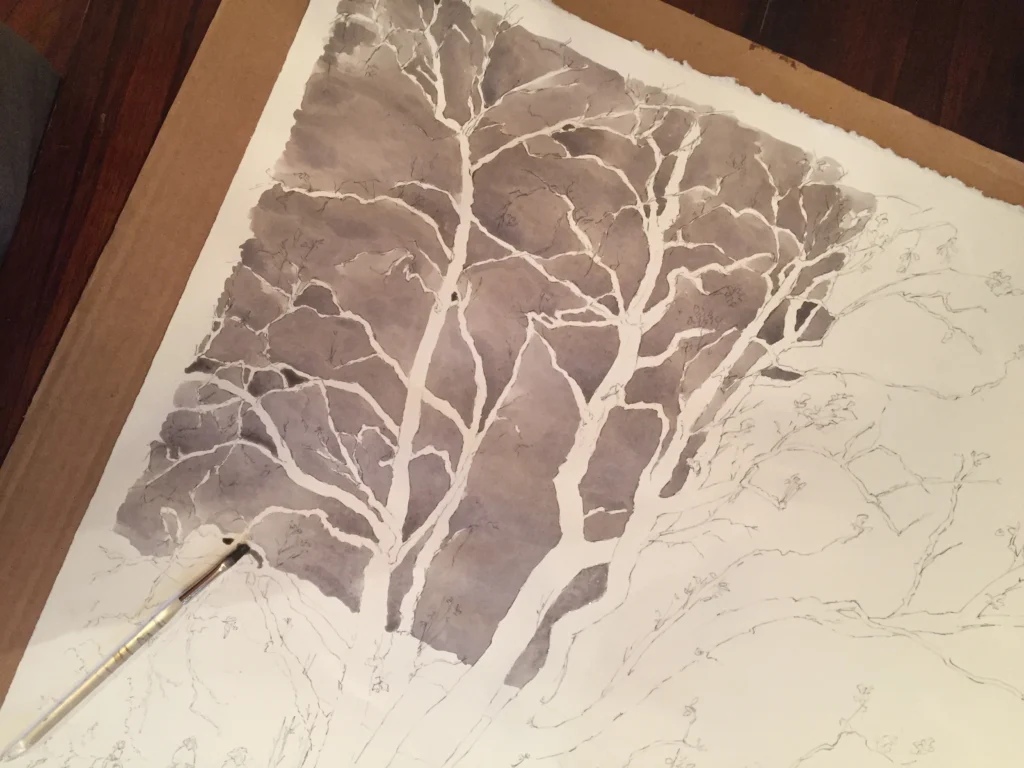

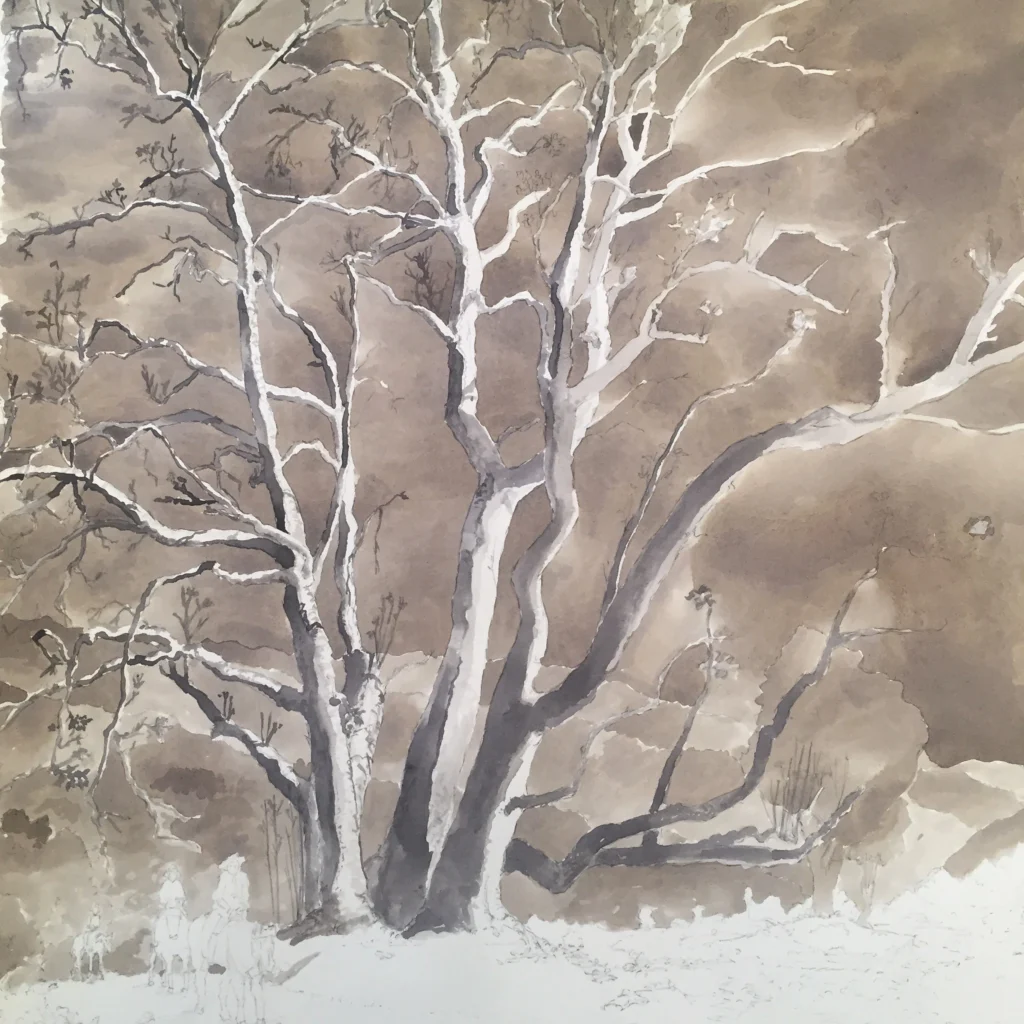





Thanks for stopping by!




